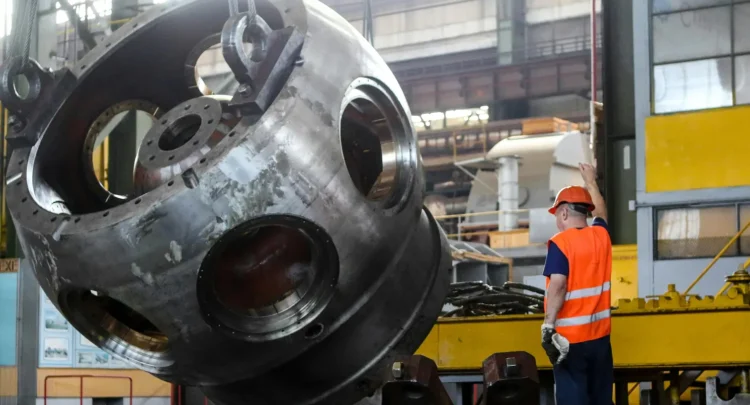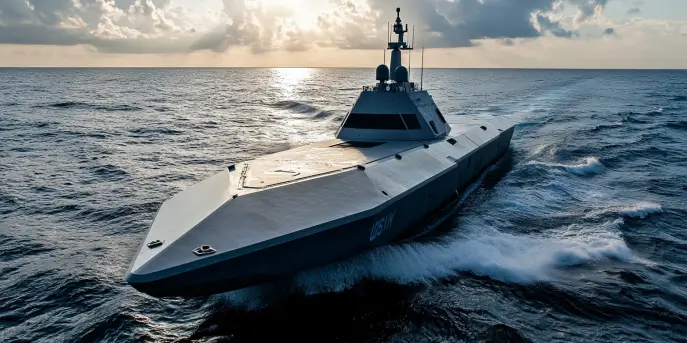The Behemoth of the Seas: Understanding Marine Propulsion
The advent of massive marine engines has revolutionized the merchant shipping industry. Among these titans, the world’s strongest marine engine commands a presence akin to a steel leviathan, providing unparalleled power and efficiency for ocean-going vessels.
Unveiling the Giant: The Wärtsilä RT-flex96C
This formidable engine, produced by Wärtsilä, boasts unprecedented power ratings, often cited as the world’s mightiest marine engine. The RT-flex96C is a two-stroke turbocharged diesel engine, designed specifically to push the limits of maritime transport propulsions. Five storeys tall and over 90 feet long, the dimensions of this engine are as daunting as its power.
Specifications at a Glance
| Specification | Detail |
|---|---|
| Type | Two-stroke turbocharged diesel engine |
| Cylinders | 14-cylinder |
| Stroke | 2.5 meters |
| Bore | 0.96 meters |
| Displacement | 1820 liters per cylinder |
| Power Output | 107,390 horsepower |
| RPM | 92-102 |
| Fuel Consumption | ~109 g/kWh |
Engineering Marvel: Efficiency and Environment
The RT-flex96C not only embodies strength but also reflects advancements in engineering with its electronically controlled common-rail technology. This feature replaces traditional camshaft engines, allowing for precision in fuel injection timing, which is crucial for maximizing efficiency and reducing operational costs. The result? A significant reduction in NOx and CO2 emissions, making these engines more environmentally friendly compared to their predecessors.
Design and Functionality: Inside the Mammoth
Each cylinder of this maritime marvel displaces 1820 liters, meaning the engine consumes a colossal 39,670 liters of fuel every day. Despite its vast energy requirements, Wärtsilä designed this engine to optimize every drop of fuel, ensuring reliability across the longest voyages.
This is achieved through a finely tuned balance between power and efficiency. The RT-flex system facilitates flexible rpm ranges, reducing unnecessary resistance and improving fuel consumption during slow steaming operations—a common practice in modern shipping to save costs and curb emissions.
Industry Impact: Reshaping Global Trade
The deployment of the RT-flex96C has a profound impact on global trade dynamics. Its integration into ultra-large container vessels (ULCVs) and Very Large Crude Carriers (VLCCs) supports the transport of tens of thousands of TEUs across continents at competitive rates, reinforcing the backbone of global commerce. The immense carrying capacity of these vessels drastically reduces per-unit shipping costs, allowing for economies of scale that benefit industries worldwide.
Furthermore, the increased reliability of these engines translates into fewer delays and lower maintenance costs. This reliability not only enhances profit margins but also strengthens supply chain stability—a crucial factor in today’s global market.
Challenges and Limitations
Despite the engine’s revolutionizing potential, it faces challenges typical to all mechanical giants. Maintenance costs are substantial, and any malfunction can incur significant delays. Moreover, as the world advances towards greener technologies, the use of traditional diesel engines is questioned. However, companies like Wärtsilä continue to innovate, attempting to balance between cutting-edge technology and environmental responsibility.
The Future: Setting Sail Towards Sustainability
With the IMO’s vision of reducing greenhouse gases from international shipping by at least 50% by 2050, the future of marine engines like the RT-flex96C will likely involve a hybrid approach, integrating renewable energy and alternative fuels. This potential shift isn’t only feasible but necessary to meet international emissions targets and ensure a sustainable maritime future.
Moreover, digitalization and the Internet of Things (IoT) are set to transform marine engines further. Smart maintenance systems, real-time data analytics, and predictive diagnostics could dramatically increase engine efficiency and lifespan, reducing both operational costs and environmental impact.







